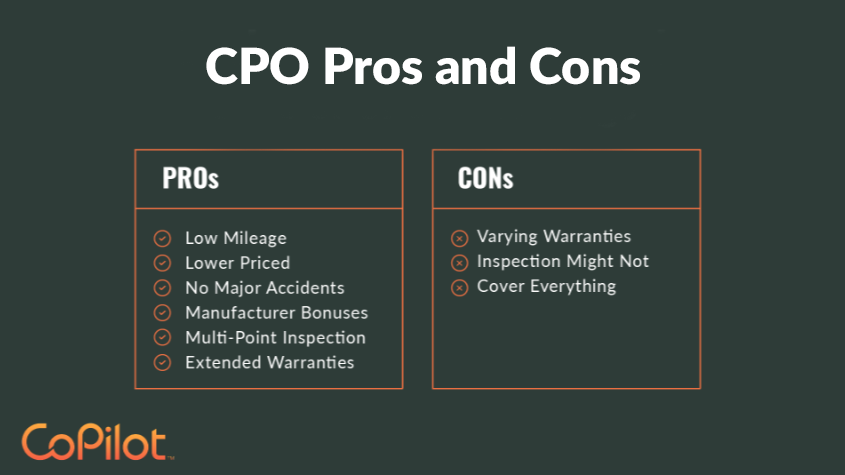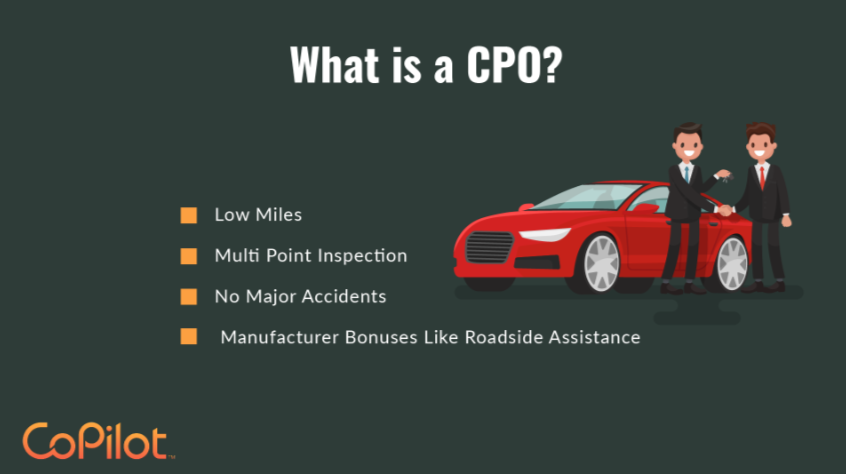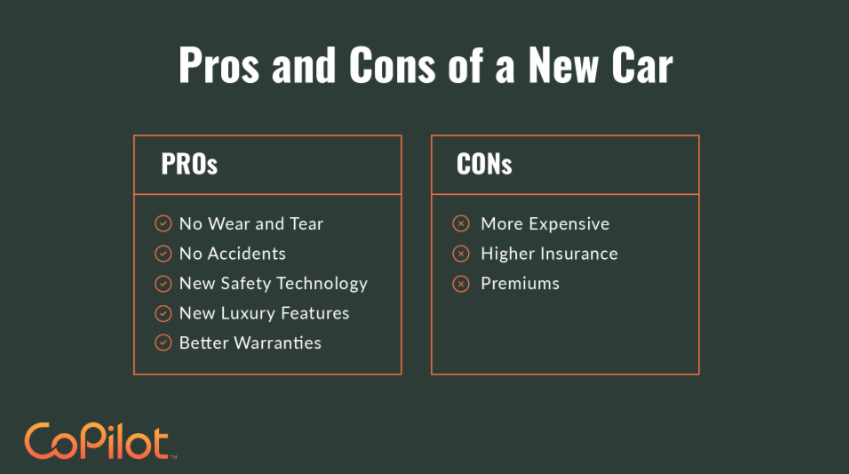Is a CPO Vehicle Better Than a New Car?

When you’re going to buy a car, you might scratch your head at the label associated with a lot of the vehicles you’re going to see.
“Certified Pre-Owned Vehicle,” for instance.
What is a Certified Pre-Owned Vehicle?

A Certified Pre-Owned Vehicle (or CPO) is a used car with low mileage and no history of major damage.
Different manufacturers have different criteria for what constitutes a Certified Pre-Owned car. Some will say that in order to be considered a CPO, the vehicle in question needs to have less than 60,000 miles on the odometer. Others might say that it has to be less than 100,000.
That’s why it’s important to check the specific guidelines set out by individual manufacturers before you buy a CPO.
But the other major question surrounding the existence of CPOs remains: Are they better than a brand new car?
It’s a complicated question to answer, because it depends on what you’re looking for. What might be better for one buyer might be worse for another.
In this article, we’re going to discuss the pros and cons of purchasing a Certified Pre-Owned Vehicle and let you make the final determination for yourself.
Benefits of a CPO Vehicle
There are a number of benefits associated with the purchase of a Certified Pre-Owned Vehicle.
Chief among them is the fact that CPOs are cheaper than brand new cars.
Secondly, because of the decreased mileage and certified history, CPOs are more reliable than a regular used car. Not only will a CPO save you money, but it also gives you peace of mind (compared to buying a used car).
Speaking of peace of mind, CPO cars need to pass through a rigorous inspection process in order to receive their certification from the manufacturer. Some CPO programs require vehicles to meet more than 180 individual inspection criteria.
Another major advantage that a CPO has over a regular used car is that they have fewer miles. When you’re dealing with a used car that has no certification, you’re often looking at vehicles with more than 100,000 or 150,000 miles on them. How long can you expect a vehicle with that many miles to last?
The CPO’s history is also taken into account when determining certification eligibility. CPOs can’t have any major accidents on record, which is a huge benefit. Typically, if a car has experienced a number of large scale accidents, it’s not going to function the same and might have more serious issues down the road. Like when a bone breaks, a car can be put back together and mended, but it’s never quite the same again.
On top of that, most Certified Pre-Owned vehicles come with an extended warranty. This is more frequently true if the car is an older model or has more miles on it.
CPOs also tend to come with buyback protection and additional benefits. A lot of CPO programs offered by manufacturers come with maintenance plans, roadside assistance, oil changes, satellite radio packages, and more.

Drawbacks of CPO Vehicles
There are some drawbacks associated with buying a CPO.
For starters, the warranties vary depending on the brand. Ford, for instance, has bumper-to-bumper coverage that lasts for one year or up to 12,000 miles. That’s really not a lot.
On top of that, while Ford has a maintenance package, they charge a $100 deductible for every visit. You really have to watch out for what each manufacturer is offering before you place your trust in a CPO.
While you’re guaranteed to get a vehicle history report with the purchase of any CPO, some reports don’t include all accidents that the car has been through. There are also no records kept on how its previous owner treated the car before it came into your possession. A CPO might have low miles, but perhaps the previous owner pushed it too hard, waited too long between oil changes, and was generally lax on its upkeep. These are some of the infuriating little surprises you might have to deal with.
A 150-point CPO checklist inspection also doesn’t necessarily guarantee the dealer did more than look at the car. You should ask clarifying questions and dive into what, specifically, has been done to ensure that the vehicle is in as near to perfect condition as it can be.
Something else to keep in mind is that most late-model used vehicles still have their original battery, tires, brake pads, and rotors. You should ask if any of these have been replaced.
Make sure that you’re checking the vehicle’s year. Most cars less than four years old are in good shape. You don’t necessarily need a CPO vehicle to get a well-maintained car if it falls within that time frame.

Benefits of Going New
You can’t deny the benefits of owning a brand new car. There’s been no wear and tear on any of the car’s components, which means it’s less likely to need repairs in the near future.
New cars also come with the newest safety technology, like blind spot sensors and rear cameras. They will also have a lot of modern conveniences, such as built-in entertainment, bluetooth integration, and more.
While CPOs have good warranties for the most part, they’re never going to beat the warranty that comes with a brand new car.
You can also customize the features of many new cars.
Disadvantages of New Cars
New cars are expensive.
You can find similar used models for a significantly cheaper price point. If budget is a concern, then a new car might not be for you.
Remember, new cars depreciate quickly. They can lose almost 20% of their value after just one year.
You’re also going to experience higher insurance rates with a new car, so make sure that it fits into your budget.
In Conclusion
If you’re budget-minded, it would be best to stick with a CPO. If you’re focused more on the features and performance of the vehicle, then you’ll likely have more luck buying a brand new car.
Regardless of what you choose, you can use CoPilot to get a list of all new and certified vehicles in your area. Utilize filters to ensure that you’re sticking within your budget and finding all of the features you’re looking for.








